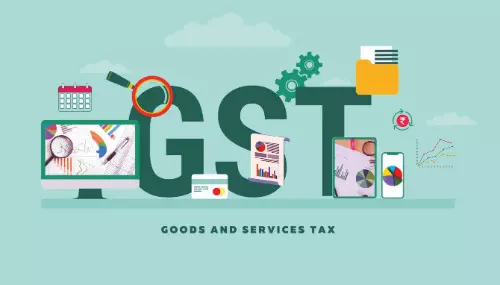Simplified Tax
The revamped GST system that kicks in on September 22 will hopefully boost demand and consumption

The GST reforms were a long time coming. A really long time. Nevertheless, better late than never, eh? A timely boost to a sluggish economy, dried up consumption patterns, and apprehensive spending. The US tariffs came as a double whammy, inciting further worry and trepidation in the market. Rationalising the GST rates and bringing most items under 5 per cent and 18 per cent is a welcome move.
GST 2.0 will provide a fillip to several sectors such as real estate, automobiles, fast-moving consumer goods (FMCG), tourism and hospitality, agriculture, renewable energy, textile and apparel, and consumer durables. The biggest winner is the common citizen, who has been burdened and aggrieved by high inflation and lower earnings. The new structure, including GST-free life and health insurance, leaves more money in the hands of the people, hopefully prompting increased consumption, while also providing a boost to the credit sector. Luxury and “sin” goods now fall under a new 40 per cent GST tax slab. A concession for professionals and consultants within the services industry would have been beneficial, but that segment has once again been entirely ignored.
The GST announcement this week has heralded sweeping changes providing much-needed succour to several industries. Going forward though, decision-makers will be better served to stay ahead of the curve and initiate policy changes to insulate India Inc., Micro, Small, and Medium Enterprises (MSMEs), and the citizens, foreseeing choppy times. The long-standing demand was pending for years and finally came at the back of years of complaints from various segments of the industry and the common man. There is no doubt that the latest changes will be beneficial to the nation, but we cannot help but question the tardiness of its timing. It’s clear as day that the administrative hands were finally forced to act, not because of the almost decade-long parlay but because of the lacklustre economy that was spooking us all. The Reserve Bank of India (RBI) successively slashed repo rates to boost spending. And with global headwinds picking up momentum, a GST overhaul was necessary; US President Donald Trump sped up the action. But will it be enough to resuscitate the economy?
Just a few days ago, the National Statistics Office (NSO) declared that India has achieved a gross domestic product (GDP) rate of 7.8 per cent in the first quarter of this financial year (April-June 2025-’26). The GDP growth was purportedly the best in the last five quarters, with construction, manufacturing, and services exceeding expectations. By that count, we are the fastest-growing major economy in the world that is continuing to grow in spite of global vagaries, ongoing wars, supply chain issues, and our own skirmish with Pakistan. Trump’s 50 per cent punishing tariff on India may sober us down, and to contain its ripple effect, the Indian government finally announced GST 2.0. The positive GDP numbers, though, didn’t reflect in the atmosphere around us. Maybe in some circles there had been euphoria, but for most businesses and professionals in one’s immediate circles, there were less than happy responses, some worried looks, and a lot of furrowed foreheads. Startups and small businesses were still shutting down, pink slips were being handed out en masse, and shrinking new job opportunities due to the brisk adaptation of artificial intelligence (AI). Exports and private investment are both tottering. The actual sentiment on the ground and among people didn’t reflect the Q1 GDP numbers, and that’s been a surprise. Of course, the government made up for economic tepidness by accelerating its spending from -1.8 per cent in the previous quarter to 7.4 per cent in Q1 FY26.
Dig deeper, and the outstanding GDP numbers tell a different story. Nominal GDP, which has not been adjusted for inflation, was at 8.8 per cent. It was a mere 1 per cent higher than real GDP and much lower than 10.8 per cent in Q4 FY25 — all pointing to a stressed economy, as per reports. Continued global instability, coupled with Agent Trump’s single-minded mission of ruining fast-growing nations, has precipitated an impending sense of doom. Buoyed by a good monsoon and now the GST revamp, India is hoping to ride out these challenging times. Even as negotiations with the US over a trade agreement will continue, the immediate fallout of the US tariff can be brutal on Indian exports, causing a drop of 2 per cent of our GDP. The remaining quarters of this fiscal will see further strengthening of a new global order. Shedding old friends and making way for new ones is on the horizon. Exploring bilateral partners, greater export markets, and projecting a united front to take on big brother bullies follows soon after.
Views expressed are personal



